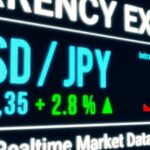Traders on Pause Mode as Fed Decision Looms
Gold prices are treading water below the $3,400 mark as the market enters a tense holding pattern ahead of a crucial interest rate decision by the US Federal Reserve. The yellow metal has extended its sideways price action into a second consecutive session during early Wednesday trading in Asia, with investors unwilling to take major positions until the Fed delivers its verdict on future monetary policy.
This cautious approach stems from mounting anticipation over the Federal Open Market Committee’s (FOMC) updated outlook, particularly the “dot plot” projections and Fed Chair Jerome Powell’s remarks at the post-meeting press conference. With the US central bank widely expected to hold rates steady for now, attention is laser-focused on whether policymakers will signal an imminent shift toward easing monetary conditions.
USD Retreats From Weekly Peak, Lending Mild Support to Gold
Despite gold’s muted intraday moves, the broader backdrop is tilting slightly in favor of the precious metal. The US Dollar has edged lower from its recent weekly highs as investors increasingly believe the Fed may resume its rate-cutting cycle as early as September. This sentiment is being driven by softer economic data and lingering geopolitical concerns, both of which tend to enhance gold’s appeal as a non-yielding, safe-haven asset.
On Tuesday, disappointing US macro data gave fresh impetus to dovish Fed expectations. The latest figures from the US Census Bureau showed that Retail Sales fell by 0.9% in May, significantly missing the -0.7% forecast and deepening from a 0.1% decline in April. Similarly, US Industrial Production dropped by 0.2% last month, underperforming projections and reversing a modest gain in April. These readings reinforce the notion that the US economy may be losing steam under the weight of high interest rates and trade policy headwinds.
Middle East Tensions and Trade Uncertainty Keep Risk Appetite in Check
Beyond domestic economic indicators, the global landscape continues to offer gold strong undercurrents of support. Escalating tensions between Israel and Iran, now in their sixth day of hostilities, have reignited safe-haven demand across financial markets. The situation has intensified with US President Donald Trump raising the stakes by demanding Iran’s “unconditional surrender” and hinting at deeper US involvement. These developments are raising the risk of a broader regional conflict—one that could severely disrupt global supply chains and energy markets.
At the same time, trade policy risks are resurfacing with new vigor. President Trump, while speaking aboard Air Force One, announced that tariffs targeting the pharmaceutical sector are “coming soon,” adding yet another front to his increasingly aggressive trade stance. With the July 9 deadline for reciprocal US tariffs fast approaching, markets remain on edge over the potential fallout for global commerce. All of this combines to bolster the safe-haven appeal of gold, even if prices remain range-bound for now.
Waiting for Powell: Markets Seek Direction From the Fed
The near-term trajectory for gold will hinge largely on the tone and content of today’s FOMC policy update. A neutral-to-dovish tone could revive bullish momentum in gold, especially if Powell acknowledges the recent softness in economic data and opens the door to a rate cut in September or later in the year.
Investors will also scrutinize the Fed’s updated economic projections and the dot plot—which shows where policymakers expect rates to go in the future. Any downward revision to growth or inflation forecasts could confirm the market’s dovish leanings and pressure the US Dollar, creating an opening for gold to climb back above $3,400.
However, if the Fed pushes back against market expectations and maintains a more hawkish tone—perhaps emphasizing data dependence or the risks of premature easing—gold could face renewed selling pressure. In such a scenario, the yellow metal may risk extending its recent pullback from the two-month high near $3,430 reached earlier this week.
Technical Outlook: Bulls Need a Clear Catalyst
From a technical perspective, gold remains confined within a tight trading range just below the psychologically significant $3,400 threshold. This level has proven to be a near-term resistance barrier, capping upside attempts in recent sessions. A sustained break above this zone could open the door for a retest of the recent multi-week high around $3,430.
On the downside, immediate support lies around the $3,360 area, followed by the more critical zone near $3,330, where the 50-day moving average intersects. A breach below these levels would likely trigger fresh technical selling and expose gold to a deeper retracement toward $3,280 or even the $3,250 mark.
However, in the absence of a decisive catalyst—such as a major shift in Fed policy guidance or a sharp escalation in geopolitical tensions—gold may continue to consolidate within its current band.
Global Central Banks Remain Key Players in Gold Market
While the Fed remains the primary focus for today, broader central bank dynamics are also influencing gold sentiment. Several global central banks, including the European Central Bank and the Bank of Canada, have recently taken dovish turns, citing slowing growth and subdued inflation. This global easing bias is supportive for gold, as lower interest rates reduce the opportunity cost of holding non-yielding assets.
Moreover, central bank gold purchases remain robust, particularly from emerging markets looking to diversify away from the US Dollar. According to recent data, central banks have been net buyers of gold for several consecutive months, underlining long-term structural demand that helps anchor prices.
What’s Next for Gold?
Once the Fed event risk passes, attention will quickly shift to other key economic reports, including next week’s Core PCE Price Index—the Fed’s preferred inflation measure. In addition, continued developments in the Middle East and further announcements from the Trump administration regarding trade will remain key drivers of gold’s direction.
Until then, traders may continue to err on the side of caution, keeping gold in a tight range as they await a clear signal from Powell and his fellow policymakers.
[faq-schema id=”39944″]









